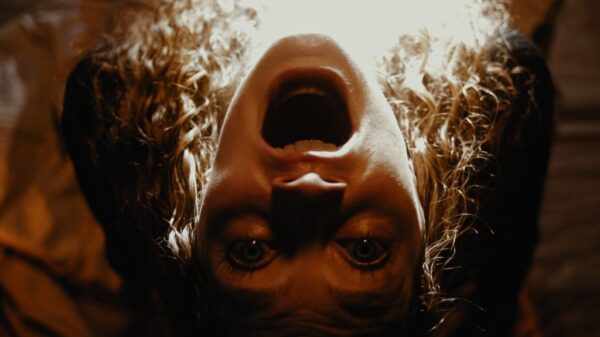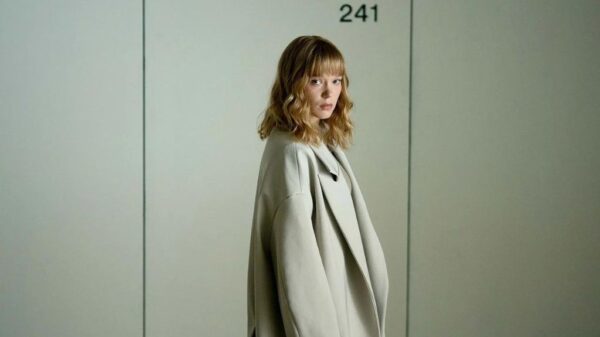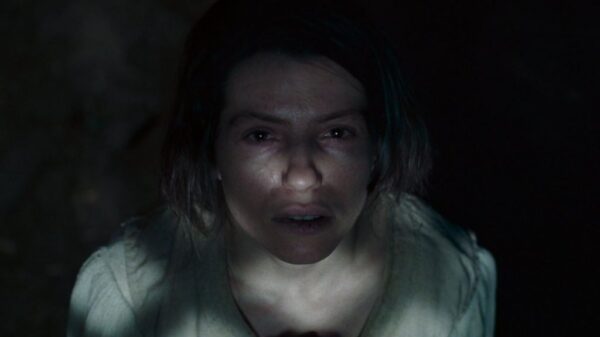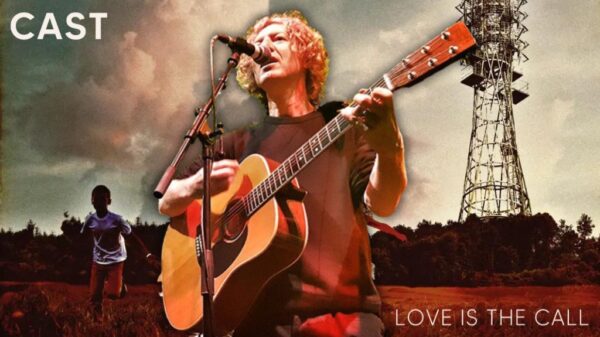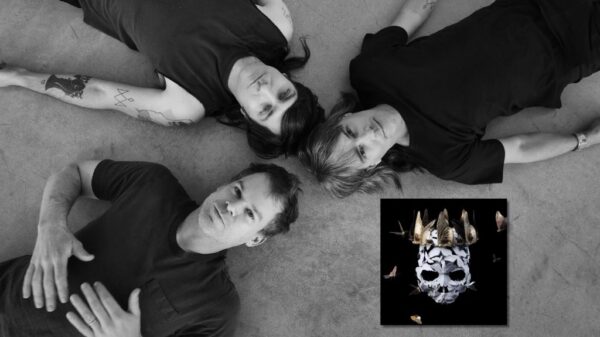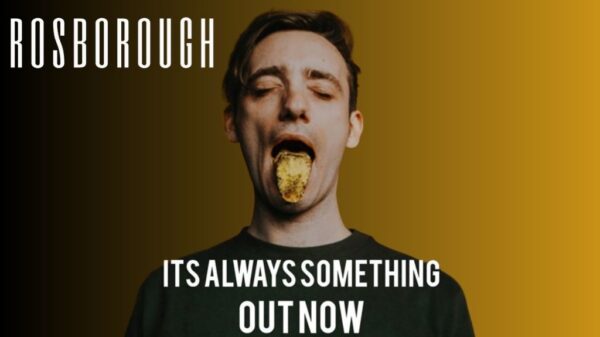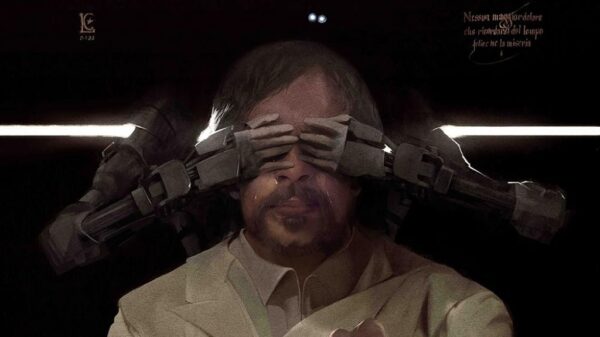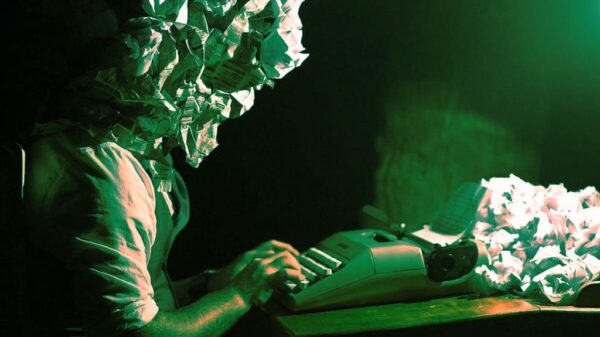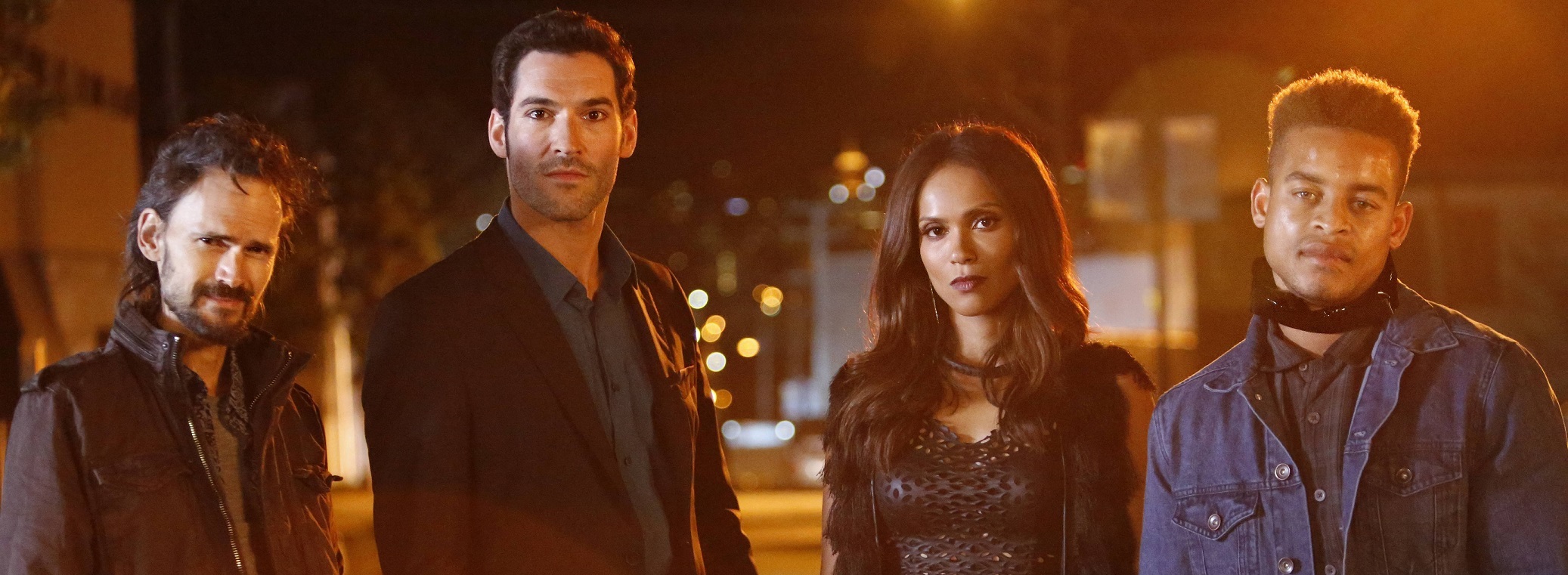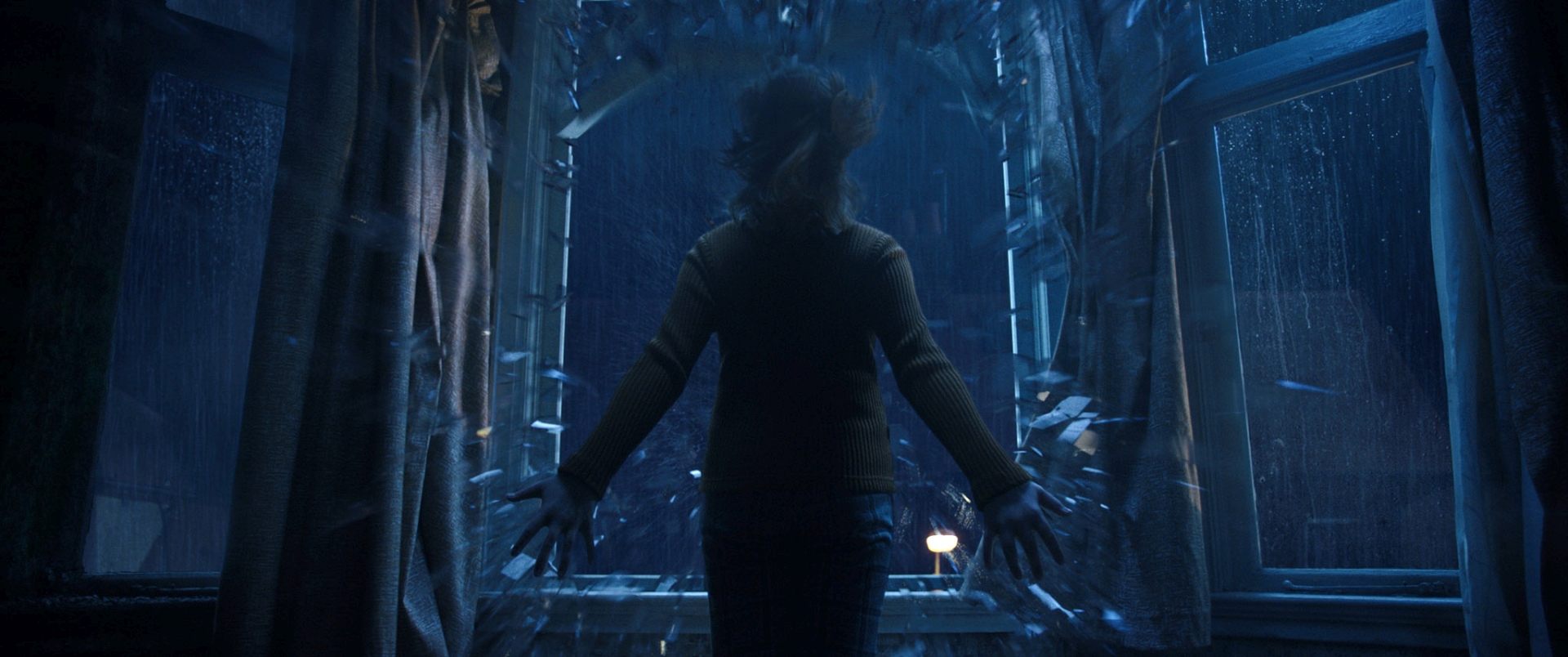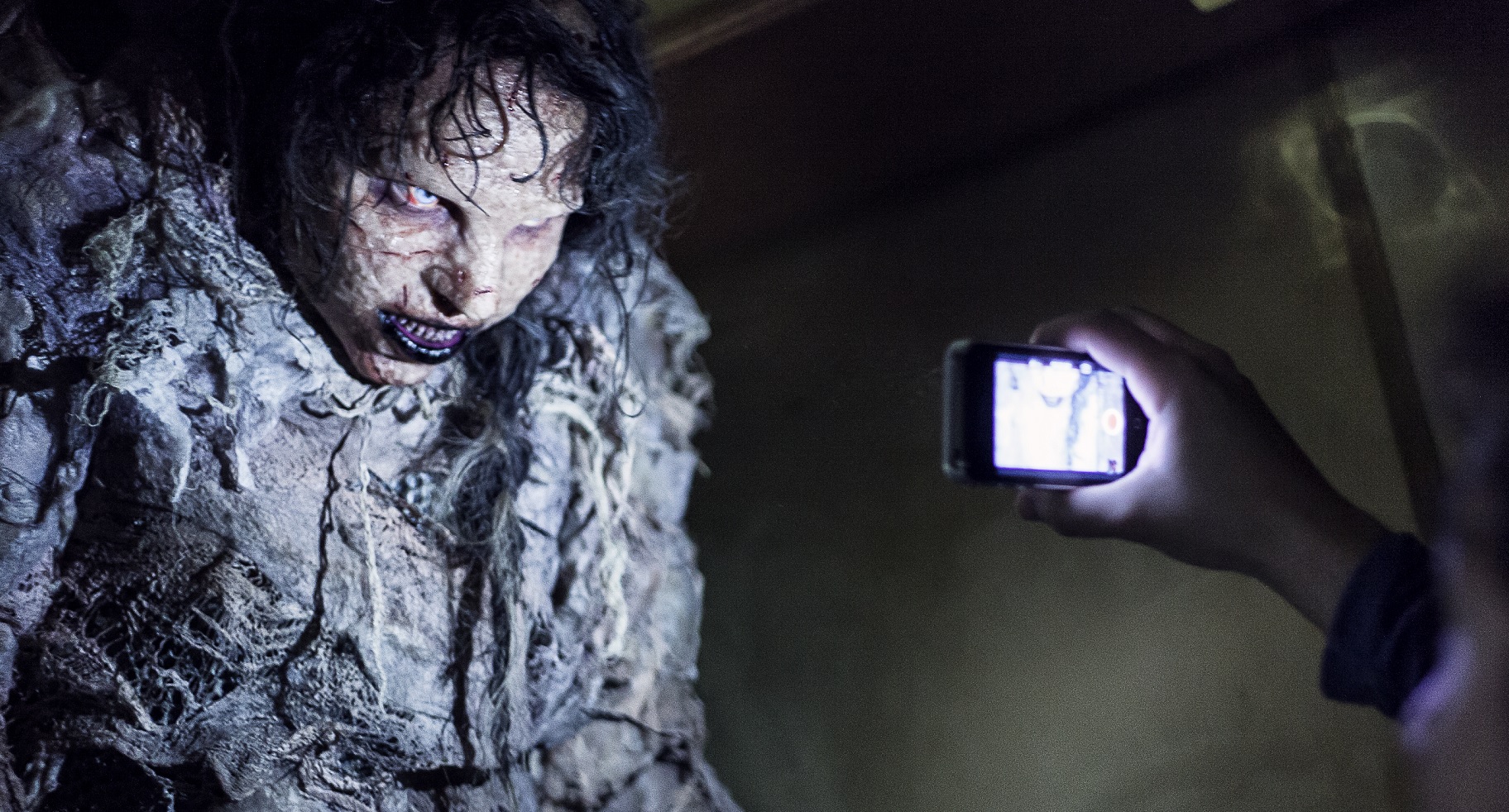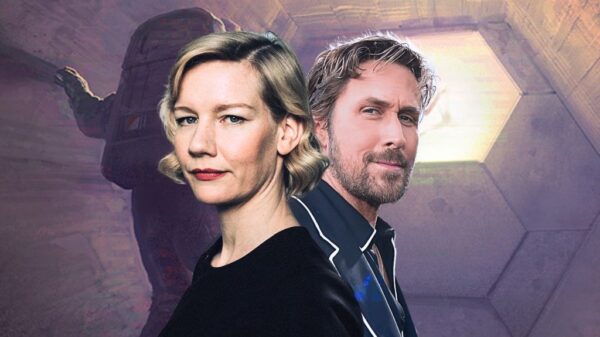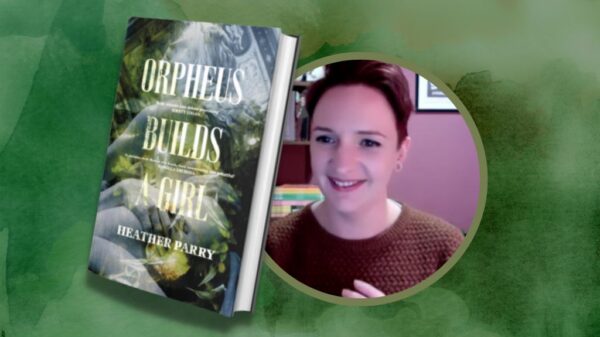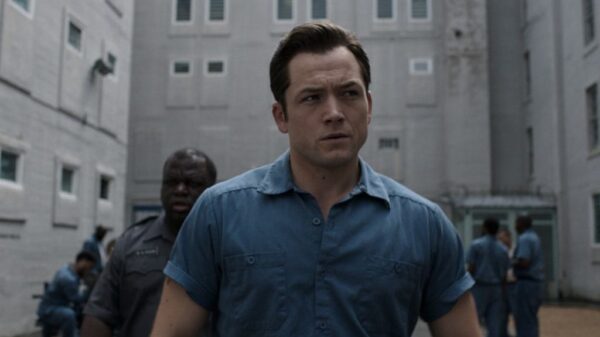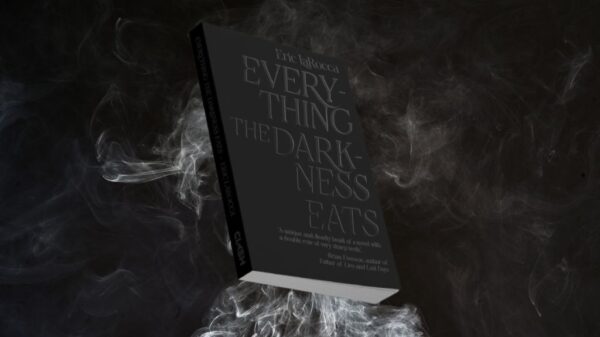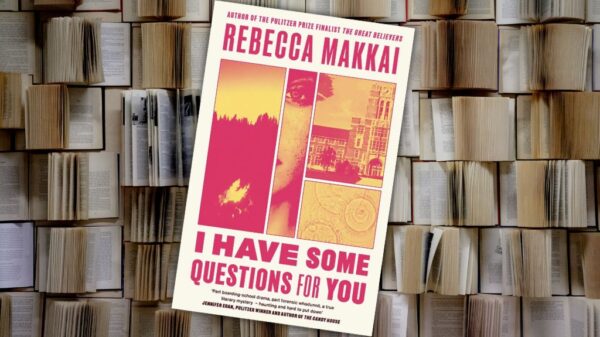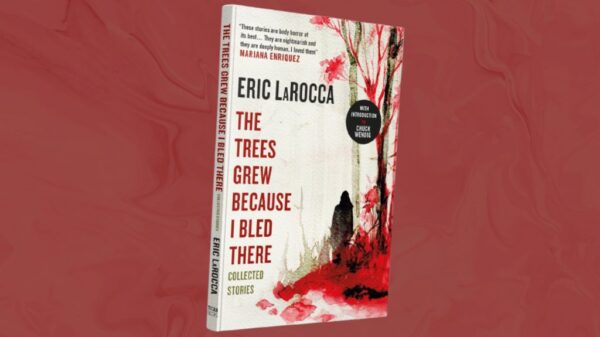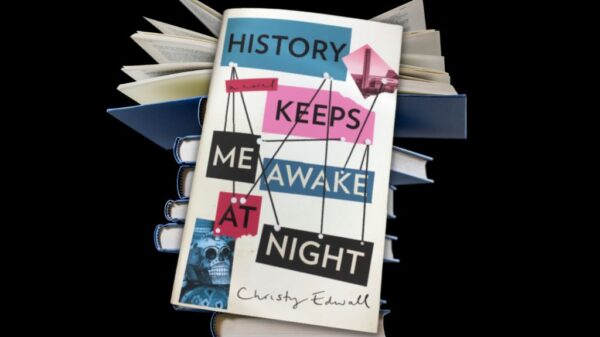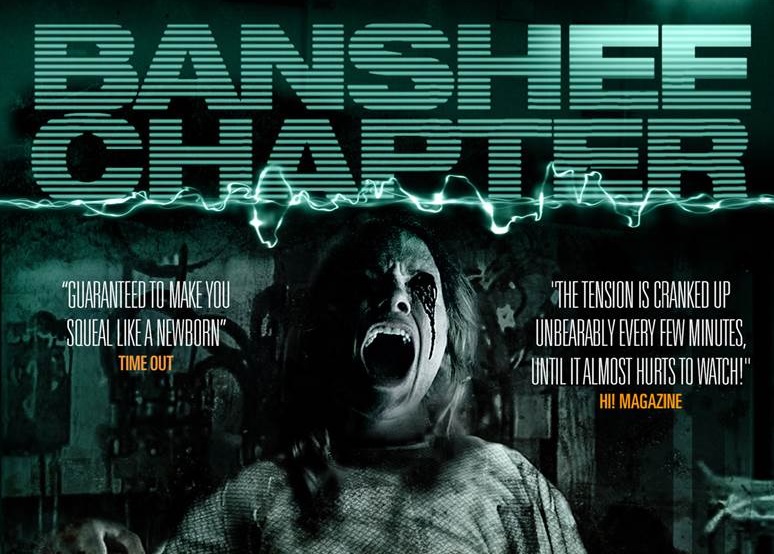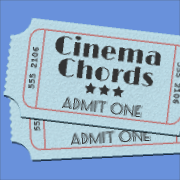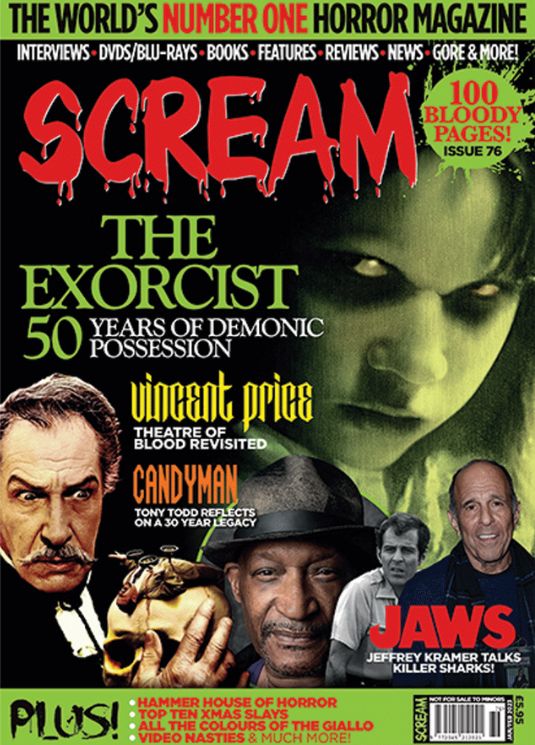 Just as it gets harder to surprise audiences with new plot twists in thrillers, making sure we all jump out of our seats in a horror film also becomes more of a challenge with time. A film that certainly managed to overcome this problem was Banshee Chapter, rightfully earning the coveted Total Film ‘Scariest Movie Award’ at last year’s Film4 FrightFest. Produced by Zachary Quinto under Before the Door Pictures and loosely based on the H.P. Lovecraft short story ‘From Beyond’, Banshee Chapter is the feature debut of director Blair Erickson.
Just as it gets harder to surprise audiences with new plot twists in thrillers, making sure we all jump out of our seats in a horror film also becomes more of a challenge with time. A film that certainly managed to overcome this problem was Banshee Chapter, rightfully earning the coveted Total Film ‘Scariest Movie Award’ at last year’s Film4 FrightFest. Produced by Zachary Quinto under Before the Door Pictures and loosely based on the H.P. Lovecraft short story ‘From Beyond’, Banshee Chapter is the feature debut of director Blair Erickson.
To celebrate the release of a film we said created an “overpowering sense of dread that never gives up momentum” we spoke to Blair all about his first foray as a feature film director, effective scare tactics and where he expects to take things from here.
This is your debut as both director and writer. Prior to this film you were creative Director for Omnicom’s high-tech interactive agency Millions of Us. When did the jump into the film business come? Was it something you’d always inspired to do or did you get a friendly push from people around you? I also understand you wrote and directed an online alternate reality live-action thriller based on the Terminator films and created a 3-D virtual world for the new Sony Playstation Home. Is this line of work where you see yourself in 10 years time or, given the success of Banshee Chapter, are you more inclined to jumping over to focus solely on film projects?
I think Millions of Us was a very cutting edge interactive agency and it let us play in a lot of new breakthrough spaces that most people never get to touch. We were making unusual and wild projects under the auspice of “brand engagement” but really it ended up being “how do we create something that nobody has ever seen using this technology.”
So we had stuff like building out an entire WWE storyline in the online community Gaia where we made it seem like the wrestlers were getting in a huge fight on the forum and forcing the users to take sides. We built out a lot of virtual world spaces in places like Playstation Home and Second Life. And then from there it wasn’t long before we were writing and filming live action web episodes for Fox‘s “Terminator” series and Dreamworks‘ film Monsters vs. Aliens.
At some point it kind of struck me, “why not try building your own story from scratch and see what you can do with that.” And as I’m writing it out I think I was still heavily influenced by the transmedia work which meant building a story full of secrets and questions. The best alternate reality works always blurred the line between “is this real or fiction” linking between real websites and completely fictional ones. It seemed intriguing to try that with a real film, where the audience would be provoked to ask questions and try to determine just how far down the rabbit hole the real conspiracy and real evidence lead.
So Banshee Chapter is said to be based on real documents, actual test subject testimony, and uncovered secrets about covert programmes run by the CIA. Firstly, how did you find out about MKULTRA and secondly, how on earth do you go about finding out what went on. I imagine you added a lot of detail to create this story and add all the elements of terror but how much of it is actually rooted in truth?
Most of my research came from just reading and watching documentaries about the project. It struck me how much incredible evidence there was supporting the truth but nobody in America was willing to bring down the hammer on the perpetrators of this horrible project.
Banshee Chapter in its pure form is a classic haunted house film, where the “house” is American society and the things going boo are our own cultural and conspiracy boogeymen we’ve tried to keep secret. It’s like this unstoppable entity that just kind of lurks inside our government, growing stronger and more dangerous till one day you hear that the NSA is spying on the entire population and nobody is in the position to stop them. Our story is of course fictional, but a whole lot of it was based on real stories I read and trying to weave them all together.
What’s fictional?
There is no HorizonJournal and there’s no Anne Roland journalist in real life.
What’s real?
There really was a program injecting unsuspecting Americans with experimental chemicals to try and hollow out their insides and create a puppet person to use as a weapon. There were many government research projects into the nature of hallucinogens where the scientists involved began to wonder if the chemical wasn’t connecting subjects to alternate dimensions. There was a patient in the MKULTRA program who was given many of these chemicals and went on to become a famous counter culture writer and unleash one of the program’s chemicals (LSD) on America, which triggered the counter culture movement. There really are unidentified numbers stations broadcasting on short wave bands. All of that stuff is real.
Oh and one other really obscure influence on the story was Philip Kramer, the bass guitarist for the acid rock band Iron Butterfly. After his stint as a musician he got a degree in aerospace engineering and claimed he had come up with some kind of faster-than-light communications formula. He vanished after driving into LAX and was not found for years till they discovered his skeletonized corpse in a van at the bottom of a canyon 4 years later.
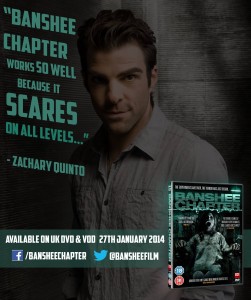 How did Zachary Quinto and his production company, Before The Door Pictures, get involved as producers for the film? I know you went to the same University, Carnegie Mellon. After Margin Call and All is Lost they recently produced a found-footage romantic comedy called Breakup at a Wedding. Did their recent venture in the found-footage genre lead them to your film?
How did Zachary Quinto and his production company, Before The Door Pictures, get involved as producers for the film? I know you went to the same University, Carnegie Mellon. After Margin Call and All is Lost they recently produced a found-footage romantic comedy called Breakup at a Wedding. Did their recent venture in the found-footage genre lead them to your film?
They just dug the script pretty much. We all knew each other from college and I think Carnegie Mellon folks have a certain geeky trust about the strange things we get interested in. Corey Moosa at Before the Door is kind of their main horror guy and he shared it with Neal and Zach and they dug it. I think they liked what we were trying to do, use horror as an intellectual vehicle to explore some of the weirder creepier aspects of our society and culture.
The found footage part was less interesting to us. It was a tool in the toolbox for playing with the archival parts of the story, basically anything that wasn’t happening in the main timeline, and pushing the audience into an immersion that you don’t usually get with flashbacks.
I understand that Zachary was away shooting most of the time but how much input did he and his colleagues, Neal Dodson and Corey Moosa bring to the table in terms of the script, shoot and finished product? Zachary has commented that you were very open to ideas in the post-production and editing process.
Yeah filmmaking is very much a collaborative process and for a lot of the post production we’d all discuss which parts of the movie we wanted to emphasize, what story lines we had to punch up, and when in the film we needed to ratchet up the intensity.
There were some plot lines that I think were interesting earlier on that we had to edit out for time and that comes from having a team like that, and my other two producers, Stephanie Riggs and Christian Arnold-Beutel to bounce edits and ideas off of. When you’re making a movie this weird and crazy, it certainly helps to have other smart brains to tell you when you’re getting it right and when you’ve gone too far.
I must say that the film certainly has some of the tensest, scariest moments I have seen in recent years. This is certainly a difficult challenge to pull off, particularly as this is your debut feature? How did you get your head around creating such a tense atmosphere and these jump-out-of-your-skin moments? Are there any particular films that you took ideas from to make them as effective as possible?
For me it’s just about imaging a scene in a movie that would make me feel as absolutely scared to watch as I could ever conceive and then trying to write it so the audience feels that same deep primal dread. My influences were everything from Adrian Lyne, Hideo Nakata, to David Lynch. I like the stuff that’s so deeply weird and creepy it makes you feel like it shouldn’t exist.
As we are well into the digital era what made you go for the more dated VHS look to the film? Would you say it plays a vital role in setting an eerier atmosphere?
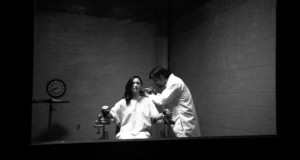 I knew that if the flashback and archival footage had a crisp clean modern look it would take the eeriness away and make it feel like just another film. Part of what hits us when we watch a film is realism or lack of. In the case of horror, when you really want to immerse people in fear, you have to pull away that psychological wall that lets them tell themselves “It’s only a movie.”
I knew that if the flashback and archival footage had a crisp clean modern look it would take the eeriness away and make it feel like just another film. Part of what hits us when we watch a film is realism or lack of. In the case of horror, when you really want to immerse people in fear, you have to pull away that psychological wall that lets them tell themselves “It’s only a movie.”
With this film, having all those sequences in Chamber 5 come through in black and white u-matic video tape helps remind audiences “this is not really just fiction, there really was something terrible that was done to people just like me in secret rooms by our own government.”
There is a clear trend for many directors to jump on the found footage horror bandwagon. It tends to be the case that these either come out perfectly such as VHS2 or REC or terribly bad with nothing in between. Obviously choosing to tackle a found footage film meant you were really going to need to pull out all the stops. Were you not concerned about this fact when you decided to take on this project, especially as it was your debut?
For me, it just felt like the appropriate tone for the story. For instance, there was actually originally a 12 minute test that my cinematographer Jeremy Obertone and I did where we shot an opening scene for the film with gorgeous lighting and a really beautiful film look. Guess what?
It was nowhere near as scary as just watching the same story play out on raw, grimy video. I think we could’ve made the same movie and it wouldn’t have terrified people nearly as much as the kind of mixed media, old film/found footage video/cinema verite style it employed.
Found footage technique is like country music and rap. Most people only remember the stuff that annoys them, but when it works in the hands of someone like Jay Z or Johnny Cash, it’s like no other style.
You provide some great comic relief with Ted Levine’s character, Blackburn. Was it always your intention to include some comedy between the scares and what made Levine the perfect man for this job?
 He was perfect because he could bring everything we needed for the character without having to be walked through it. There was almost a perfect Blackburn performance from the moment the cameras started rolling. He instantly got the fine line he had to walk between creepy and comedy to make that character bring such a wonderful strange energy to the story. Too far in either direction and it probably would’ve faltered. Levine is exactly the actor you want when you need to really push the limits of possible with a strange story like this.
He was perfect because he could bring everything we needed for the character without having to be walked through it. There was almost a perfect Blackburn performance from the moment the cameras started rolling. He instantly got the fine line he had to walk between creepy and comedy to make that character bring such a wonderful strange energy to the story. Too far in either direction and it probably would’ve faltered. Levine is exactly the actor you want when you need to really push the limits of possible with a strange story like this.
And where are you hoping to go from here? Are you going to stick to horror films or are you looking to venture out and try something totally different in the near future?
The next film I’m directing, In Memory, which we’re currently in the process of putting together, is very, very, very different from this one in many ways.
It opens in Pittsburgh in the fall of 1996, when Jessica King, a passionate, creative college student, and her introspective companion, Daniel became more than close friends. As their lifelong friendship began blossoming into something deeper, Jess was brutally murdered. Daniel’s life was shattered. Almost two decades past, late one snowbound winter night, when he’s in his late thirties, Jess shows up again at Daniel’s home, appearing the same as she did the night she died. Together they will confront the hard truths of tragedy, unfinished lives, and how their journey together will end: as a love story or a horror story.
My incredibly talented friend and co-writer Shawn Depasquale helped immensely with the story and during the course of it we really pushed ourselves into some deep emotional places to reach a kind of truth that would resonate past the usual movie narrative bullshit. It’s a very emotional character driven story about tragedy and what it means to truly love another person. But there are still some terrifying moments in the tale and I think there are still scenes where the audience will be gripping their seat anxiously. But how the story ends though, I think will shock people, in a really good way.
Ultimately though, when it works, and I am supremely confident that this story will, the film will have reached a place that I’ve never seen a film reach before.
I can’t wait to share it with audiences.
We’d like to thank Blair for taking time to answer our questions and, having seen the film various times myself, we can’t recommend enough that you grab your copy of Banshee Chapter which is now available to order on Amazon: http://amzn.to/1fjtp2G and iTunes: http://bit.ly/KgxSVh.









